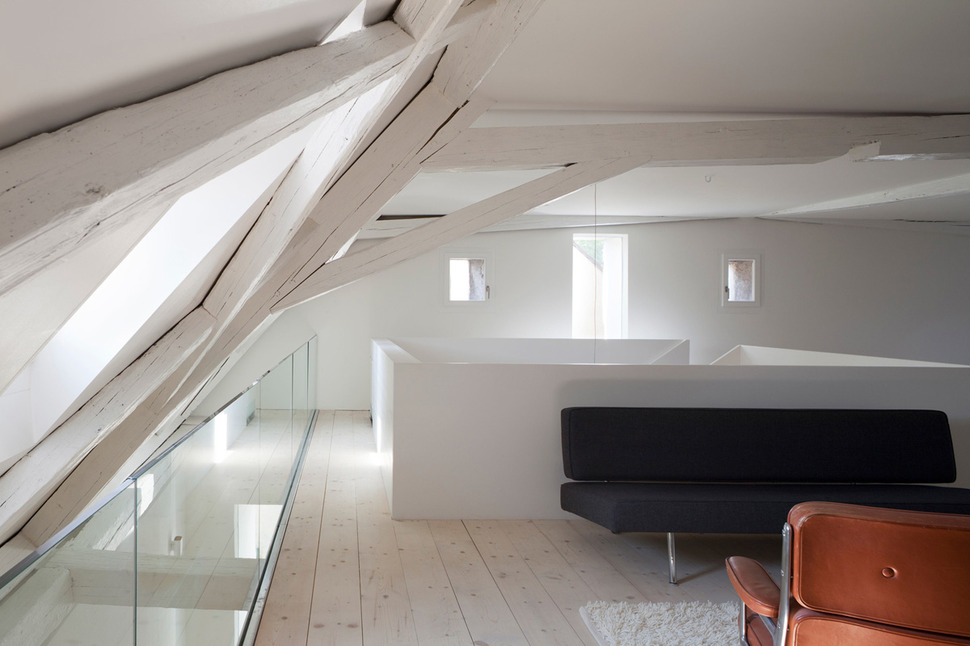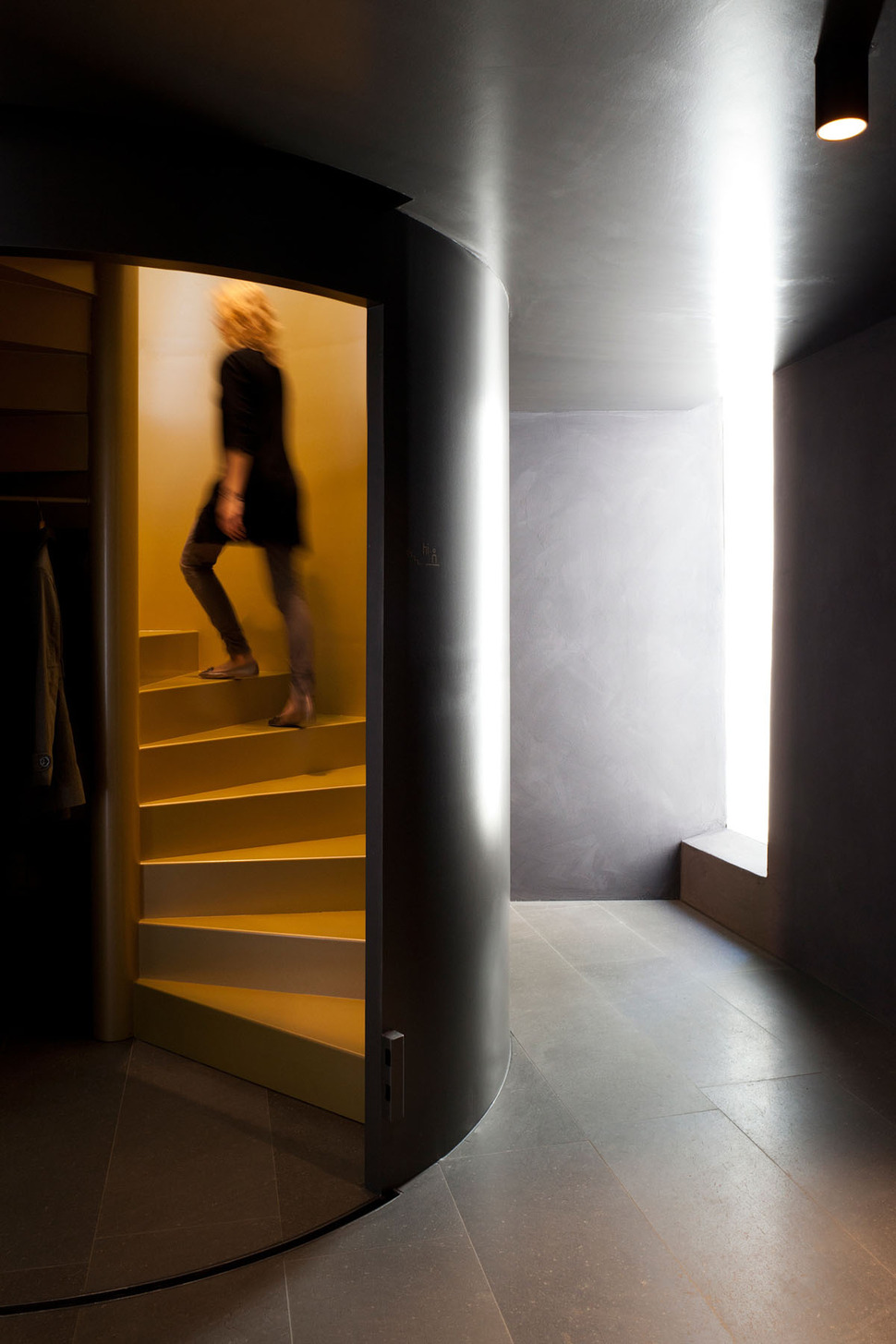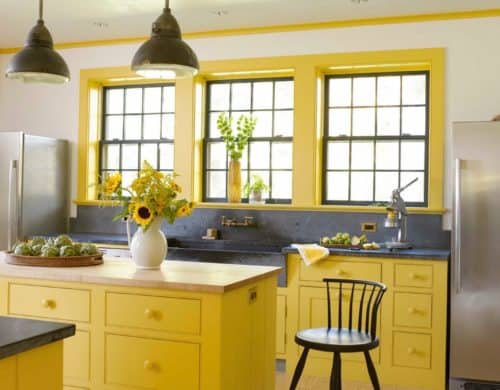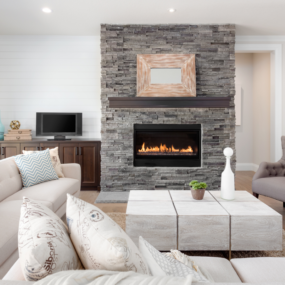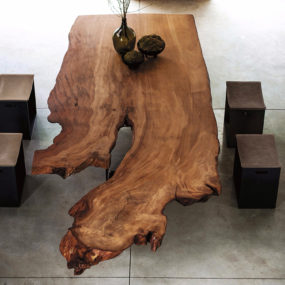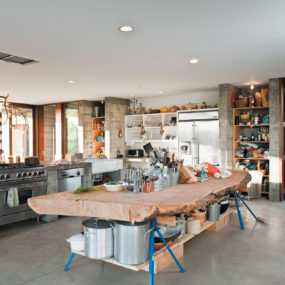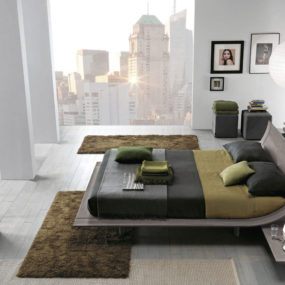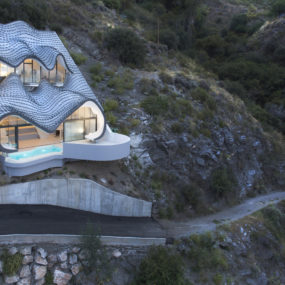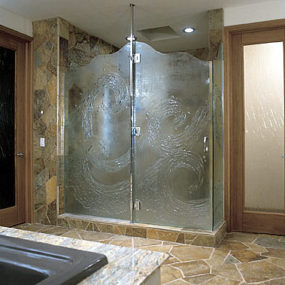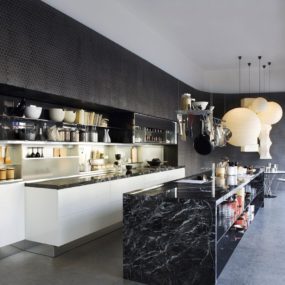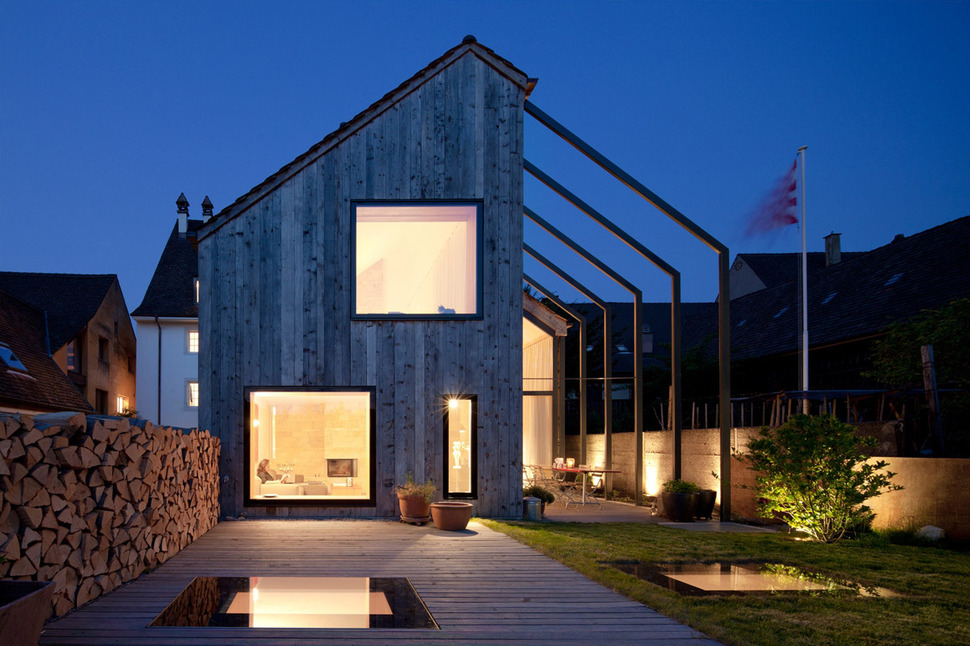
This adaptive re-use project by Oppenheim Architecture + Design comes in response to a contest launched by the local authorities of Muttenz/Basel, Switzerland. The existing 16th century old farmhouse was restored and adapted to be used as the architects office on the top level, but also as community meeting place. The converted farmhouse serves as compelling link to a new adjacent private residence. The new building is a modern reinterpretation of the historic farmhouse. The facades are covered in reclaimed wood, but bigger openings are punched in to bring in as much natural light as possible. The interior of the new building is entirely contemporary, save from some recuperated pieces such as a big size more rustic dining table and two wooden stools. The walls are white and crisp, the floors are covered with grey tile on the living floor and large-sized parquet on the bedroom floor. The exterior and interior geometry is harmonious, with very clean lines and angles that give a certain rhythm to the space. The residence is structured on three levels, two above the ground and a semi-buried level for the kid’s quarters. The children’s bedrooms have access outside to a ramped terrace enclosed by concrete walls on two sides. The ground floor is dedicated to the day areas, with open-plan kitchen and dining room, and a living room set behind a limestone wall that integrates a glass-protected fireplace. The top floor is dedicated to the night area, with a master bedroom, bathrooms and guest bedroom.

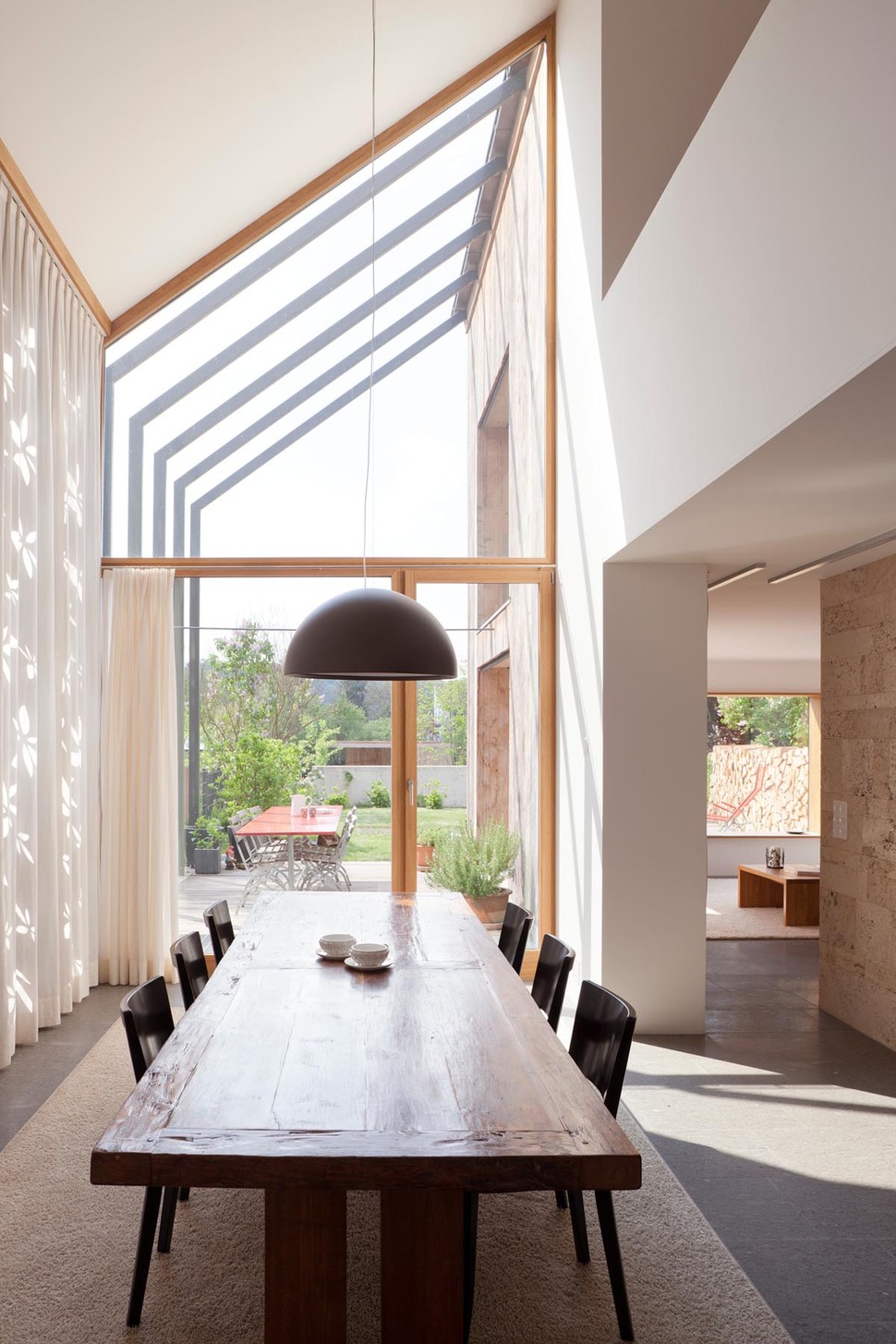
The dining area is set under a double height, that stops half way will a glass wall. The structure continues outdoors with a series of wooden beams that protect the terrace like an invisible shade.
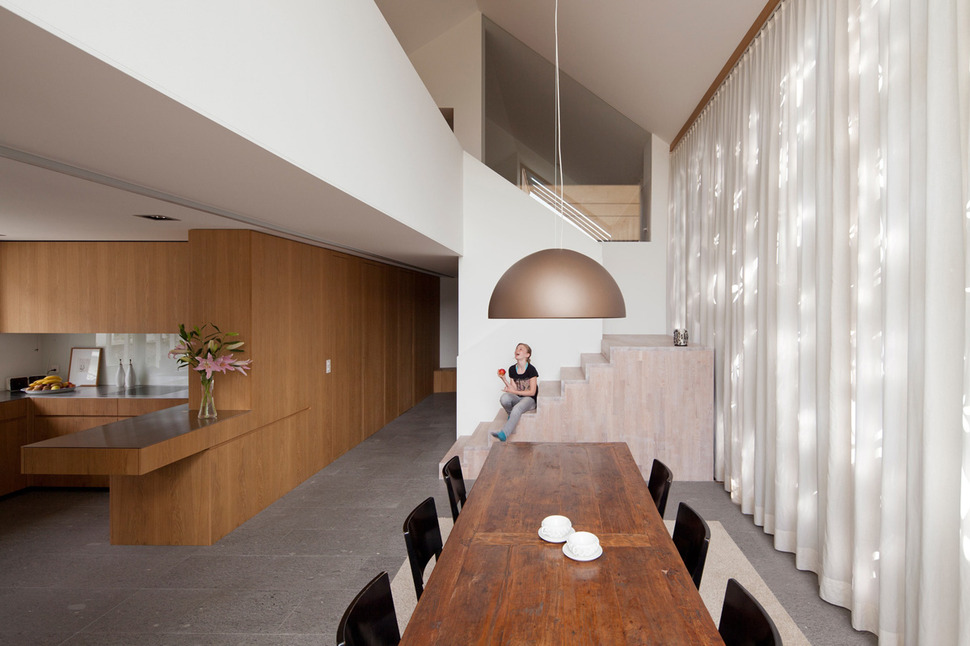
The glass facade on the right side of the dining table is covered full height by a sheer curtain doubles by an opaque one with butterfly cutouts, which project nice butterfly shadows inside the house. A big bowl pendant lamp seems to be levitating over the dining table, hanging on an quasi invisible cable.
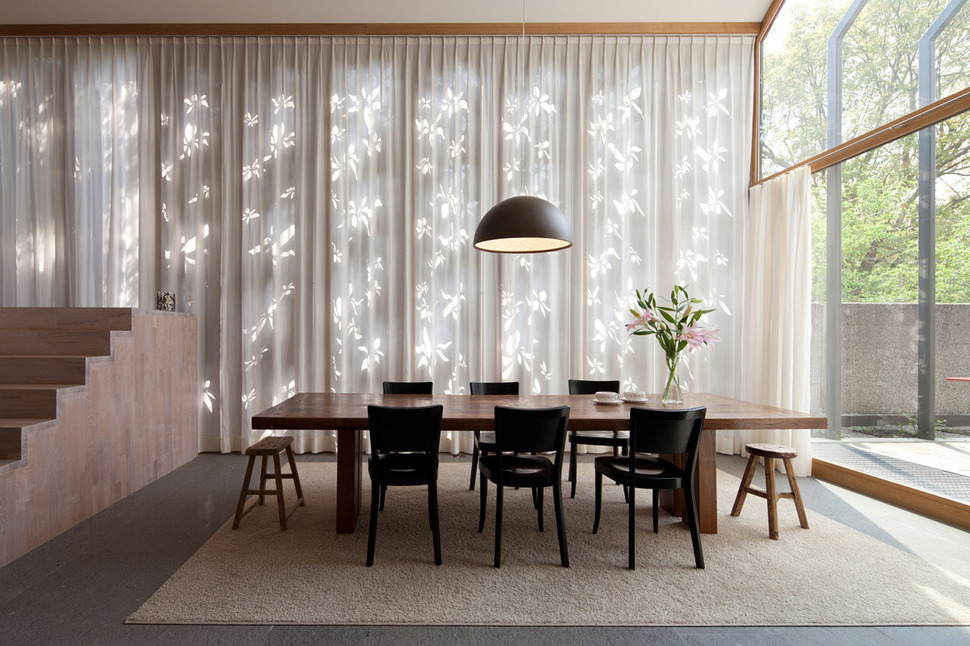
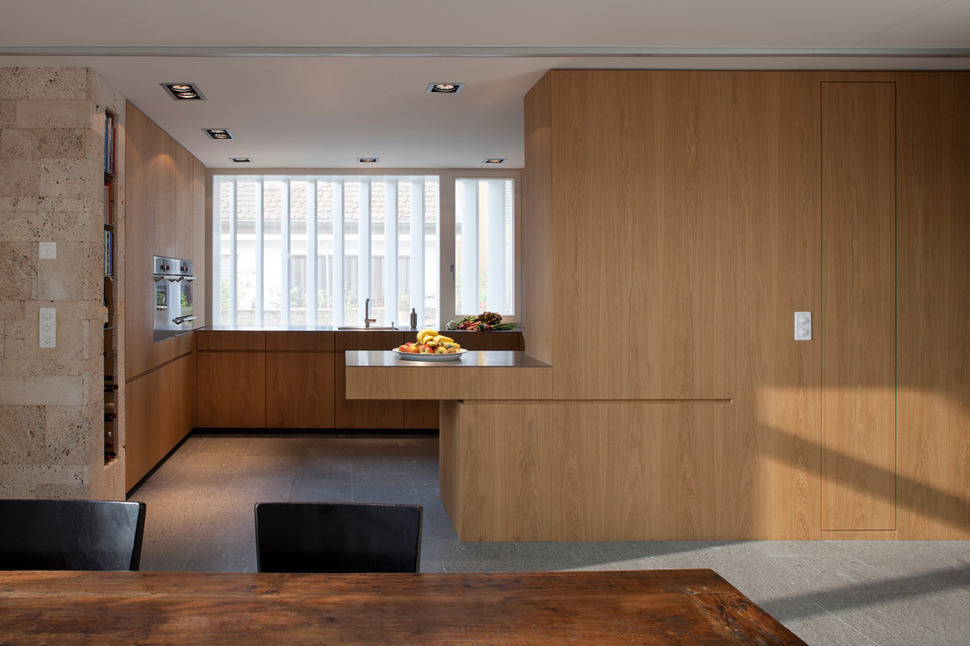
The kitchen has clean lines and is “hidden” behind wooden cabinet doors and panels. The handles are carved directly in the wood in order to keep the minimalistic look.
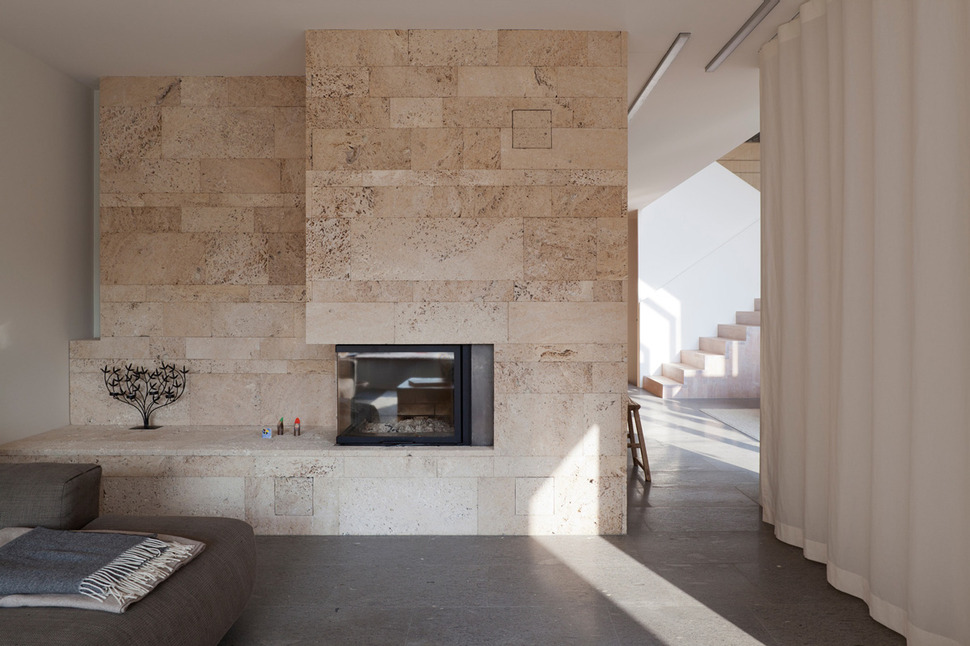
Limestone is used as accent in various parts of the house. In the living room, it covers a whole wall that also integrates the fireplace.

The bedroom floor has only half the footprint of the ground floor, and it overlooks the dining area. The materials used are the the same as downstairs, except from the floors that are covered in hardwood for a warmer feel.

Floor to ceiling wood panels double the walls in the bedrooms and bathrooms, integrating storage and shelves.
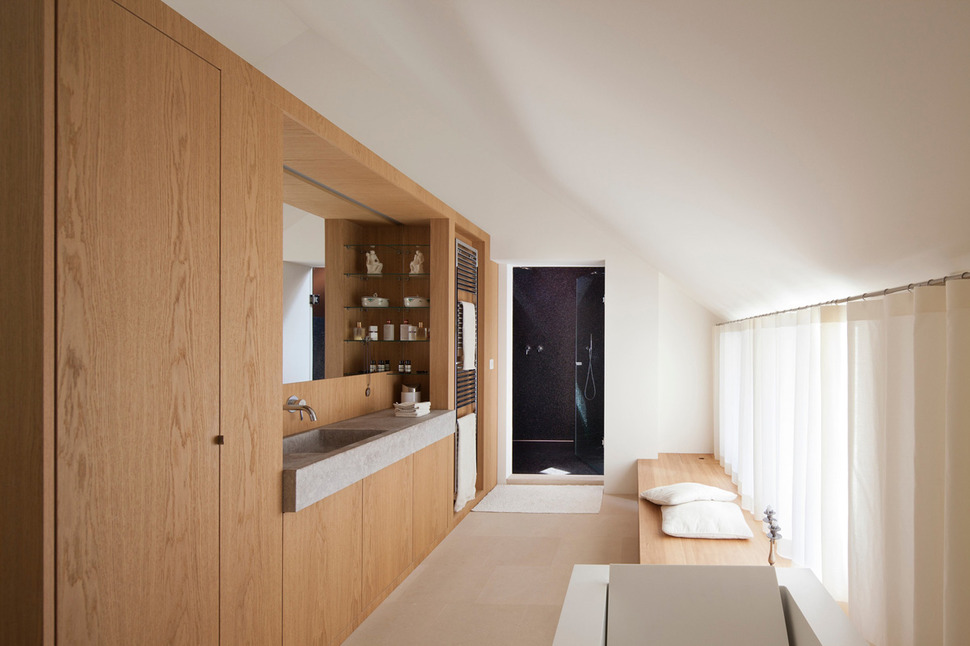
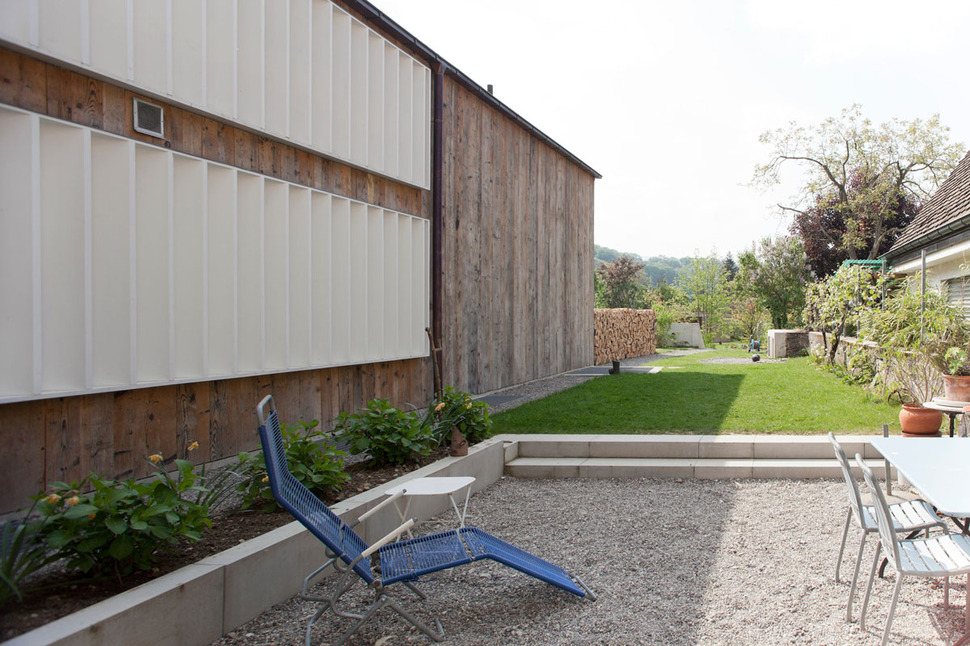

The architects’ office is located in the restored farmhouse. The atmosphere is all white, with the old beams painted white and a big work/conference table in glossy white, the “pièce maitresse” of the office.
